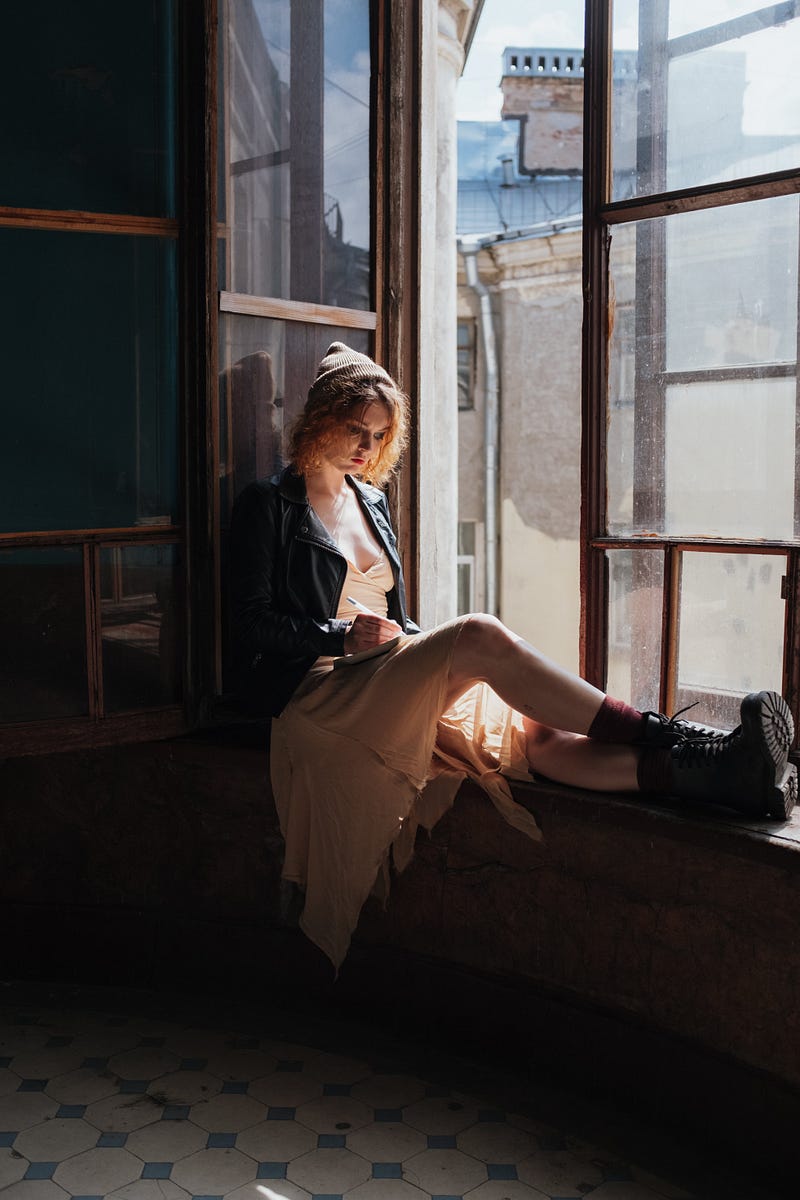# Embracing Change: Letting Go of My 17-Year-Old Self
Written on
Chapter 1: Reflections on Youth
As I reflect on the past decade, I feel prepared to release the remnants of my seventeen-year-old self.

While teaching "The Giver" by Lois Lowry to my middle school students last week, I aimed to illustrate that the themes of the 1993 novel resonate today, three decades later. One eager student raised his hand, correcting me: "Actually, 1993 was thirty years ago, not twenty." He leaned back, clearly pleased with his correction.
I laughed off his remark with a half-hearted joke about my subconscious misleading me, suggesting that if 1993 could be thirty years ago, then I must be nearly thirty too—an age I hadn’t yet embraced. Although I just turned twenty-seven, middle schoolers love to tease their teachers about being old.
The joke landed as I expected, and my students giggled while I attempted to steer the class back to the lesson. However, I now wonder if perhaps it was my subconscious, rather than my math skills, that caused the slip-up—not out of fear of aging, but from the realization that I still identified with who I was in 2013: my seventeen-year-old self.
I used to assert that my seventeen-year-old self was the most recent version of me. Similar to Taylor Swift's eras, that age marked a distinct shift in my personality and style that I felt I had carried forward. From ages twelve to fourteen, I was an aspiring country girl with dreams of emulating Taylor Swift, despite never having set foot on a farm. By fifteen, I had morphed into a moody teen with vibrant blue hair and eclectic fashion choices, including a rainbow friendship bracelet that boldly proclaimed "SHUT UP." At sixteen, I transitioned to dark brown hair, heavy eyeliner, and a penchant for black-and-white selfies on Facebook.
By seventeen, I had toned down my rebellious streak. This version of me embraced my (mostly) natural blonde hair and smiled for family photos. I fancied myself edgy, but I was also polite and dreaming of becoming a language arts teacher or a famous singer-songwriter—whichever path unfolded.
While my adult self exhibits some differences from my seventeen-year-old counterpart—my hair remains similar in color and length, yet I prefer curling it rather than straightening—I still wear Converse shoes, now in lilac instead of classic black. I continue to jam out to Better Than Ezra, claiming them as my favorite band.
My relationship with writing remains complicated, as does my work ethic, which still feels overwhelming. Although I now juggle a full-time job, a house, a husband, and adult responsibilities, I still find joy in the same silly YouTube videos, like "Charlie the Unicorn," and quote "Napoleon Dynamite" whenever the opportunity arises.
In many respects, I am still that same person from my teenage years. Even my appearance hasn't changed drastically, aside from my baby cheeks thinning out. Yet, for the first time in years, I no longer feel as connected to the person I was in 2013.
The younger version of me often let others dictate my feelings and experiences, hiding behind a punk rock facade that suggested I was unaffected. Why confront my emotions when I could express them through music? It seemed easier to absorb my struggles rather than tackle them head-on, which ultimately allowed them to grow beyond my control.
This led to a perfectionism that I now see as a beautifully wrapped demon, promising peace but delivering only chaos. My focus was solely on my future, and I believed I had to execute everything flawlessly. Good grades, volunteer hours, weekend jobs to save for tuition, calorie counting, and the endless cycle of weight fluctuations consumed my life.
Despite the exhaustion, I achieved my goals. I made it to college and embarked on the next chapter of my life. However, I clung to my teenage identity and perfectionism, believing they were my only shields against the world, even as they caused me pain.
I thought that achieving outward perfection might quiet my inner demons, perhaps allowing me to find inner peace. Thus, the cycle continued through college, my first apartment, my first teaching job, marriage, and the onset of true adulthood. I felt tired and burnt out, yet convinced I was managing just fine. My seventeen-year-old self stared back at me in the mirror as I applied makeup, and I thought, "We've made it this far; we're okay."
I can't pinpoint when the shift occurred, but eventually, I broke free from the suffocating grip of perfectionism. Perhaps it was when my Apple Watch broke, freeing me from the obsession with tracking calories. Maybe it was leaving a toxic work environment, which felt risky but necessary. It could have even been as simple as realizing I didn't need to wear a full face of makeup every day.
When that student corrected my mental math a week after my twenty-seventh birthday, something clicked. After a decade of clinging to a past identity and a toxic obsession with perfection, I was finally ready to let go of that version of myself.
Though I’m uncertain who this new version will be, I have a sense that I will embrace her, and I know I’ll be willing to release her when the next era of my life begins.
Chapter 2: Wisdom from the Past
In the video If I Talked to My 17 Year Old Self, the speaker reflects on their teenage years and shares insights that resonate deeply with the challenges and triumphs of youth.
The video 17 Pieces Of Advice For My 20-Year-Old Self ⚠️ offers valuable lessons learned in the transition to adulthood, encouraging viewers to embrace change and growth.